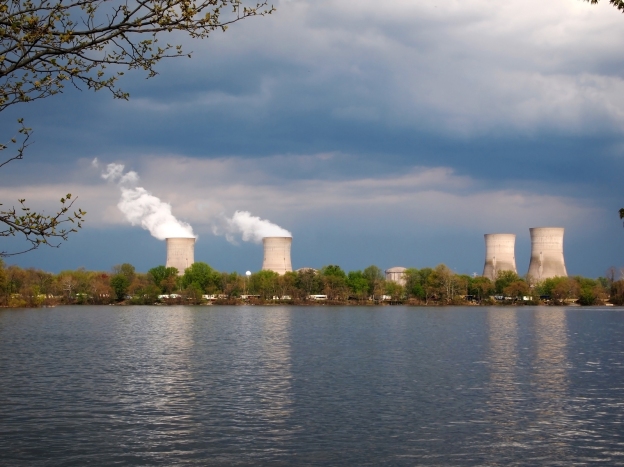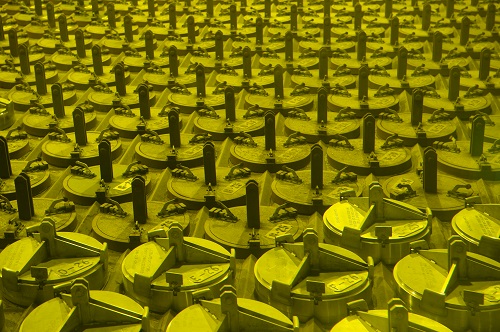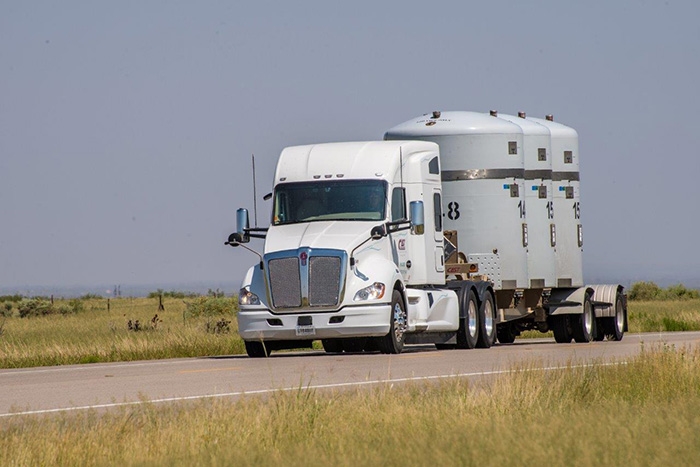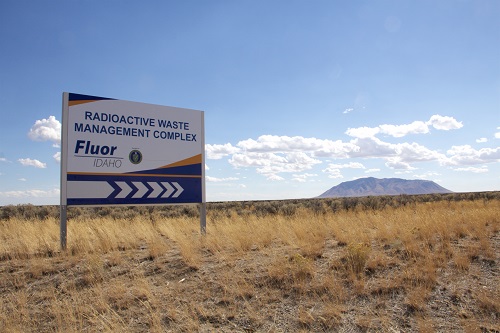The Timeline
June 2011: Las Conchas Fire threatens transuranic nuclear waste stored at Los Alamos.
Jan. 5, 2012: New Mexico Environment Department and Los Alamos National Laboratory (LANL) prioritize cleanup of above-ground legacy waste and agree on a June 30, 2014, deadline to ship all Cold War-era nuclear waste to the Waste Isolation Pilot Plant (WIPP).
June 26, 2012: Gov. Susana Martinez visits Los Alamos to celebrate the 1,000th shipment of waste to WIPP.
Aug. 1, 2012: LANL changes policy, requiring organic kitty litter instead of the clay-based variety to absorb liquids in packaging of nuclear waste.
September 2012: The lab begins using organic kitty litter exclusively as an absorbent in waste.
August 2013: LANL officials authorize waste packaging contractor EnergySolutions to add neutralizer to acidic waste, despite manufacturer’s warnings about incompatibility.
Dec. 4, 2013: Waste Drum 68660 is packaged at Los Alamos for shipment to WIPP.
Feb. 5, 2014: An underground truck fire forces evacuation at WIPP.
Feb. 14, 2014: A chemical reaction causes the drum to rupture, triggering a radiation leak that exposed more than 20 workers to contamination and indefinitely shut down WIPP.
May 2014: The first public reports emerge that organic kitty litter may have been a factor in the radiation leak at WIPP, and WIPP officials learn details about the waste from LANL that indicate the lab hid certain truths about its contents and their volatility.
June 17, 2014: LANL scientists conclude heat from the ruptured drum at WIPP could have made up to 55 more drums stored nearby more volatile.
July 23, 2014: LANL officials acknowledge a lead-contaminated glove in the waste drum that burst at WIPP has been added to the factors being investigated as the possible cause.
Sept. 30, 2014: U.S. Department of Energy announces full resumption of activities at WIPP could be five years away and estimates the recovery cost at $500 million.
Oct. 1, 2014: U.S. Department of Energy Office of Inspector General issues a report condemning LANL for failing to follow its own internal safety procedures and warnings against mixing volatile components in the drum that ruptured at WIPP.
In the summer of 2012, Gov. Susana Martinez visited the hilltop facilities of Los Alamos National Laboratory to commemorate a milestone. The lab, under an agreement with the state, had just shipped its 1,000th truckload of Cold War-era nuclear waste from the grounds of Los Alamos to a salt cavern deep under the Southern New Mexico desert. The achievement meant the lab was well on its way to meeting a June 30, 2014, deadline imposed by Martinez to remove radioactive gloves, machinery and other equipment left over from decades of nuclear weapons research.
For Los Alamos National Security LLC, the private consortium that operates the lab, the stakes were high. Meeting the deadline would help it secure an extension of its $2.2 billion annual contract from the U.S. Department of Energy.
But the following summer, workers packaging the waste came across a batch that was extraordinarily acidic, making it unsafe for shipping. The lab’s guidelines called for work to shut down while the batch underwent a rigid set of reviews to determine how to treat it, a time-consuming process that jeopardized the lab’s goal of meeting the deadline.
Instead, the lab and its various contractors took shortcuts in treating the acidic nuclear waste, adding neutralizer and a wheat-based organic kitty litter to absorb excess liquid. The combination turned the waste into a potential bomb that one lab chemist later characterized as akin to plastic explosives, according to a six-month investigation by The New Mexican.
The lab then shipped a 55-gallon drum of the volatile material 330 miles to the Waste Isolation Pilot Plant, the nation’s only underground repository for nuclear waste, southeast of Carlsbad. Documents accompanying the drum, which were supposed to include a detailed description of its contents, were deeply flawed. They made no mention of the acidity or the neutralizer, and they mischaracterized the kitty litter as a clay-based material — not the more combustible organic variety that most chemists would have recognized as hazardous if mixed with waste laden with nitrate salts, according to interviews and a review of thousands of pages of documents and internal emails obtained through a Freedom of Information Act request.
In Feb. 14, with the campaign to clear the waste from Los Alamos more than 90 percent complete, the drum’s lid cracked open. Radiation leaked into the air. Temperatures in the underground chamber soared to 1,600 degrees, threatening dozens of nearby drums. At least 20 workers were contaminated with what federal officials have described as low levels of radiation.
The facility, meanwhile, remains shut down as an estimated $500 million recovery effort expected to last several years gets underway, leaving thousands of containers of nuclear waste destined for WIPP stranded at national laboratories across the country.
Documents and internal emails show that even after the radiation leak, lab officials downplayed the dangers of the waste — even to the Carlsbad managers whose staff members were endangered by its presence — and withheld critical information from regulators and WIPP officials investigating the leak. Internal emails, harshly worded at times, convey a tone of exasperation with LANL from WIPP personnel, primarily employees of the Department of Energy and Nuclear Waste Partnership, the contractor that operates the repository.
Taken together, the documents provide a window into a culture of oversight at the lab that, in the race to clean up the waste, had so broken down that small missteps sometimes led to systemic problems….
The National Nuclear Security Administration’s Accident Investigation Board, an arm of the Energy Department, is expected to soon release findings of its investigation on the cause of the radiation leak. And the New Mexico Environment Department is set to begin levying fines against LANL that some lab officials expect could total $10 million or more. As its report takes shape, the federal board is exploring what role LANL contractors’ profit motive and the rush to meet the deadline imposed by the state Environment Department — a key objective necessary to fully extend its lucrative contract — played in the missteps that caused the leak.,,,
More than three months after the leak, LANL chemist Steve Clemmons compared the ingredients of the drum, labeled Waste Drum 68660, to a database of federal patents and found that together, the drum’s contents match the makeup of patented plastic, water-gel and slurry explosives, according to a memo. “All of the required components included in the patent claims would be present,” Clemmons wrote in the May 21 memo.
Personnel at WIPP were oblivious to Clemmons’ discovery….
Frustrations over LANL’s reluctance to share what it knew about Waste Drum 68660 had been percolating at WIPP long before the discovery of the memo that suggested the drum contained all the ingredients of a patented plastic explosive. A May 5 email between WIPP employee James Willison and federal contractor Fran Williams suggested LANL was reluctant to acknowledge the most basic details about what Waste Drum 68660 held. “LANL used a wheat-based kitty litter rather than clay-based kitty litter as a stabilizer,” Willison wrote. “They fessed up after we nailed down the general area.
Excerpts from Patrick Malone, LANL officials downplayed waste’s dangers even after leak, The New Mexican, Dec. 9, 2014





